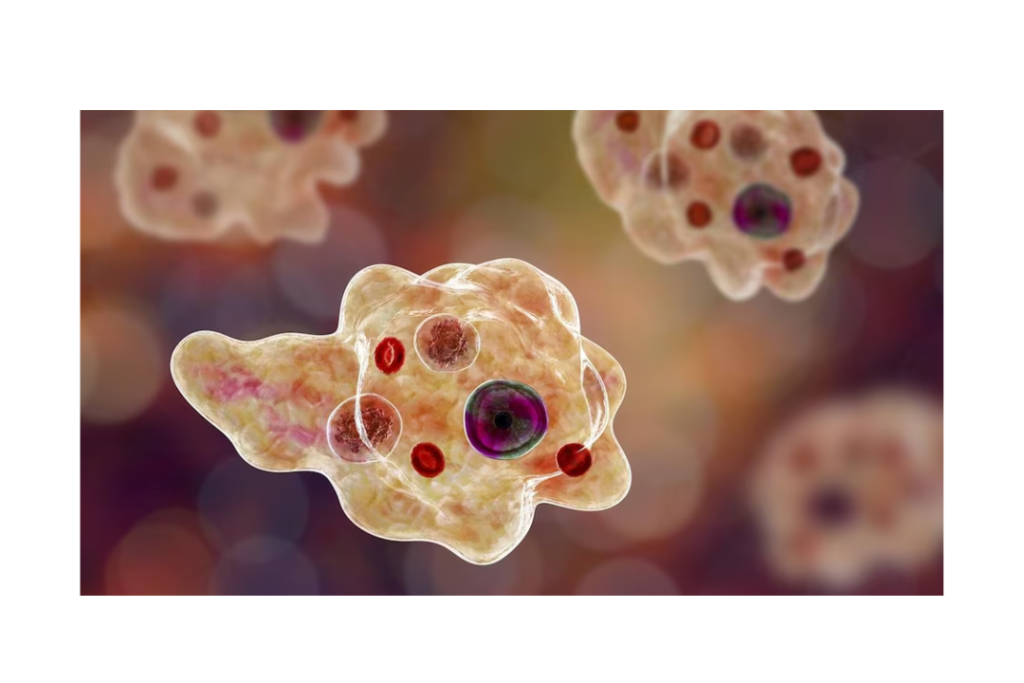A tragic encounter with a Brain Eating Amoeba led to the tragic death of a 14-year-old boy from Kozhikode.
In the sleepy Keralan town of Kozhikode, a tragic incident occurred when a 14-year-old boy died from a rare and fatal disease caused by a brain eating amoeba. Warnings about the hidden dangers of contaminated water and the urgent need for public awareness of these rare infections have been echoed by this tragic incident.
Table of Contents

Deciphering Amoebic Meningoencephalitis
The condition that killed young E.P. Mridul, amoebic meningoencephalitis, is an uncommon but sometimes fatal brain illness. Free-living amoebas found in contaminated water, particularly those species like Naegleria fowleri and Acanthamoeba, are the cause of this disease. These amoebas, often known as “brain-eating amoebas,” can cause severe encephalitic inflammation and damage by entering the body through the nasal passages and making their way to the brain.
The Calamity in Kozhikode
The Victim: E.P. Mridul
Mridul, a student at Kozhikode’s Farook Higher Secondary School in the seventh grade, started experiencing cephalalgia and emesis. After being admitted to a private hospital, doctors quickly determined that he had amoebic meningoencephalitis. Even after being given medical attention, Mridul passed away on July 3 at 11:20 PM, leaving a grieving community in her wake.
The Origin of Infection Brain Eating Amoeba
Prior to getting sick, Mridul had reportedly had a dip in a pond. Health officials had no choice but to notify the public about the occurrence, advising them to avoid using the pond and to be vigilant for any signs of the infection.
The Deadly Amoeba: Naegleria fowleri and Acanthamoeba
Naegleria fowleri
Naegleria fowleri, the brain eating amoeba, is typically found in tepid freshwater environments including lakes, rivers, and thermal springs. Usually, when people swim or dive in polluted water, it enters their bodies through the nasal passages and spreads to other people. After entering, it travels to the brain and causes primary amoebic meningoencephalitis (PAM), a very contagious and fatal infection.
Acanthamoeba
Another species, Acanthamoeba, is usually found in soil, dust, and water and can also cause amoebic meningoencephalitis. Although infections are not as common as those brought on by Naegleria fowleri, they can nonetheless happen and result in serious health issues.
Also, Read : Empower Hopeful Journey, Lungs Cancer: Unveiling Optimism with Revolutionary Mesothelioma Therapy
Symptoms of Amoebic Meningoencephalitis
Initial Symptoms Brain Eating Amoeba
Initial signs and symptoms of amoebic meningoencephalitis usually appear one to nine days after the contaminated water exposure. Brain Eating Amoeba, These preliminary signs and symptoms consist of:
- Cephalalgia
- Pyrexia
- Nausea
- Emesis
Progressive Symptoms
As the infection advances, more severe symptoms can manifest, such as:
- tiff neck
- Convulsions
- Altered mental state
- Hallucinations
Swift Progression Brain Eating Amoeba
Rapid progression of the illness often results in mortality 1–12 days after symptoms start. This rapid progress emphasizes the need of early identification and therapy.
The Spread of Infection
Entry of the Amoeba into the Body
When people swim or dive in polluted water, the brain-eating amoeba usually enters the body through the nasal passages. Brain Eating Amoeba, From the brain, it ascends the olfactory nerve and starts destroying brain tissue, causing severe infection and inflammation.
Transmission and Contagion
The fact that this illness does not transfer from person to person must be understood. Since the sickness can only be contracted by exposure to contaminated water, caution must be exercised when participating in aquatic activities in impacted areas.
Health Officials’ Response
Public Advisories and Precautions
Following these sad events, public health officials have released advisories asking people to stay away from known hazardous water sources. In addition, they have urged people to be informed about the signs of amoebic meningoencephalitis and to get help right away if they exhibit any of the symptoms.
Also, Read : Interpreting the Continual Battle Against COVID-19: Perspectives from Academics
Historical Cases in Kerala
There have been previous reports of occurrences of this disease in Kerala, specifically in the coastal district of Alappuzha in 2017 and 2023. Brain Eating Amoeba, These earlier occurrences have highlighted the persistent threat that brain-eating amoebas pose in the area.
The Significance of Awareness and Precaution
Educating the Public
It is critical to increase public awareness of the risks posed by amoebic meningoencephalitis. People must understand the dangers of swimming in possibly contaminated water and the necessity of getting medical help right once if symptoms appear.
Preventive Measures
Avoiding swimming in warm, freshwater bodies that may be contaminated, using nasal clips or keeping one’s nostrils sealed when diving or jumping into the water, and making sure that water used for recreational purposes is thoroughly cleaned and treated are some preventive methods.

Conclusion
The terrible death of 14-year-old E.P. Mridul in Kozhikode is a grim warning about the dangers that amoebas that consume brains might bring. Even though amoebic meningoencephalitis is uncommon, it is a very deadly condition that needs to be known about very away. Brain Eating Amoeba, By educating the public and putting preventive measures in place, we can reduce the chance that such sad incidents will happen again.
For the latest news from across India, Political updates, Technology, Science, Automobile, Sports News, Lifestyle, Entertainment, Mythological Updates and more Top News, visit and Subscribe to our Now Mirror.





